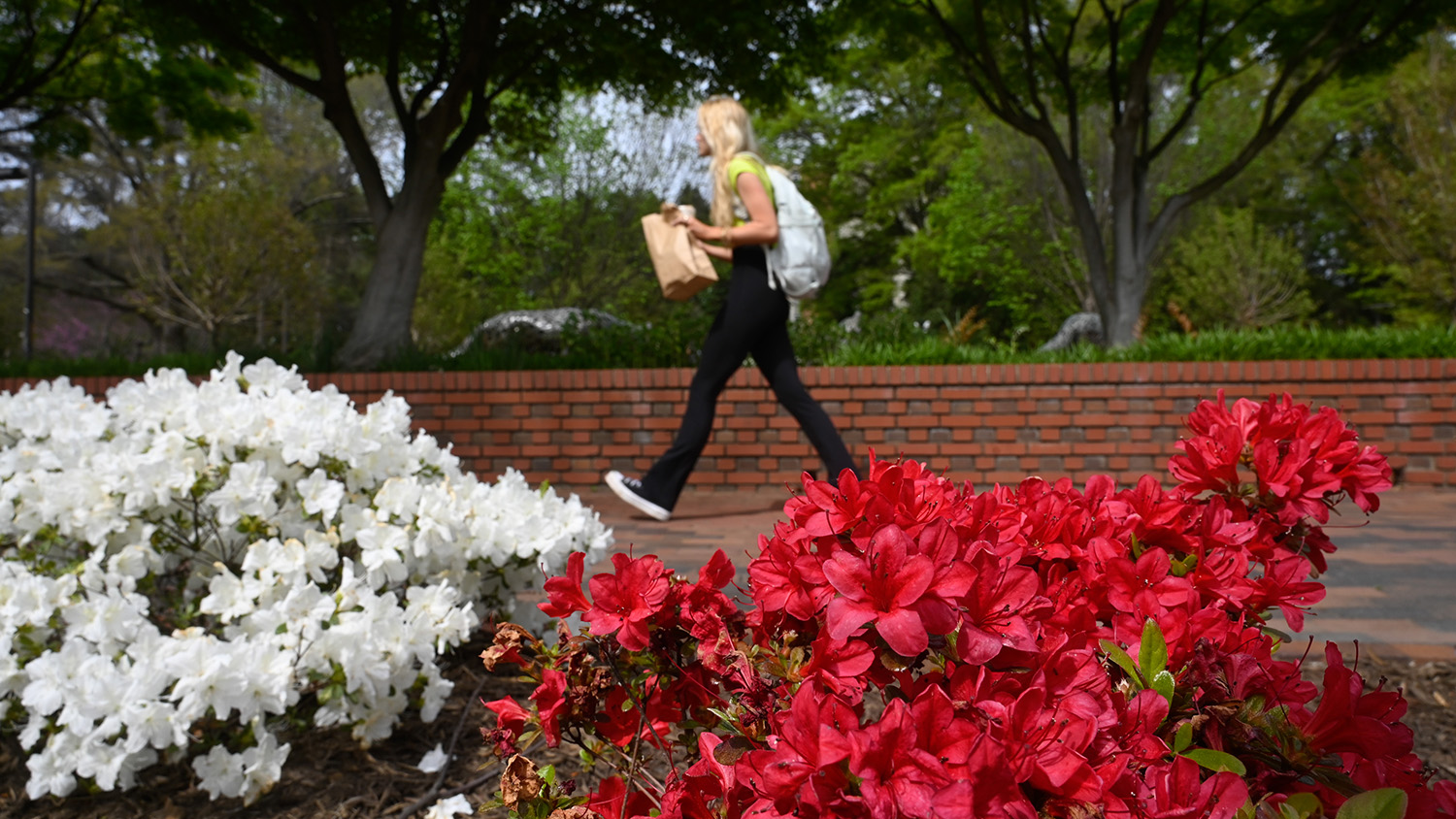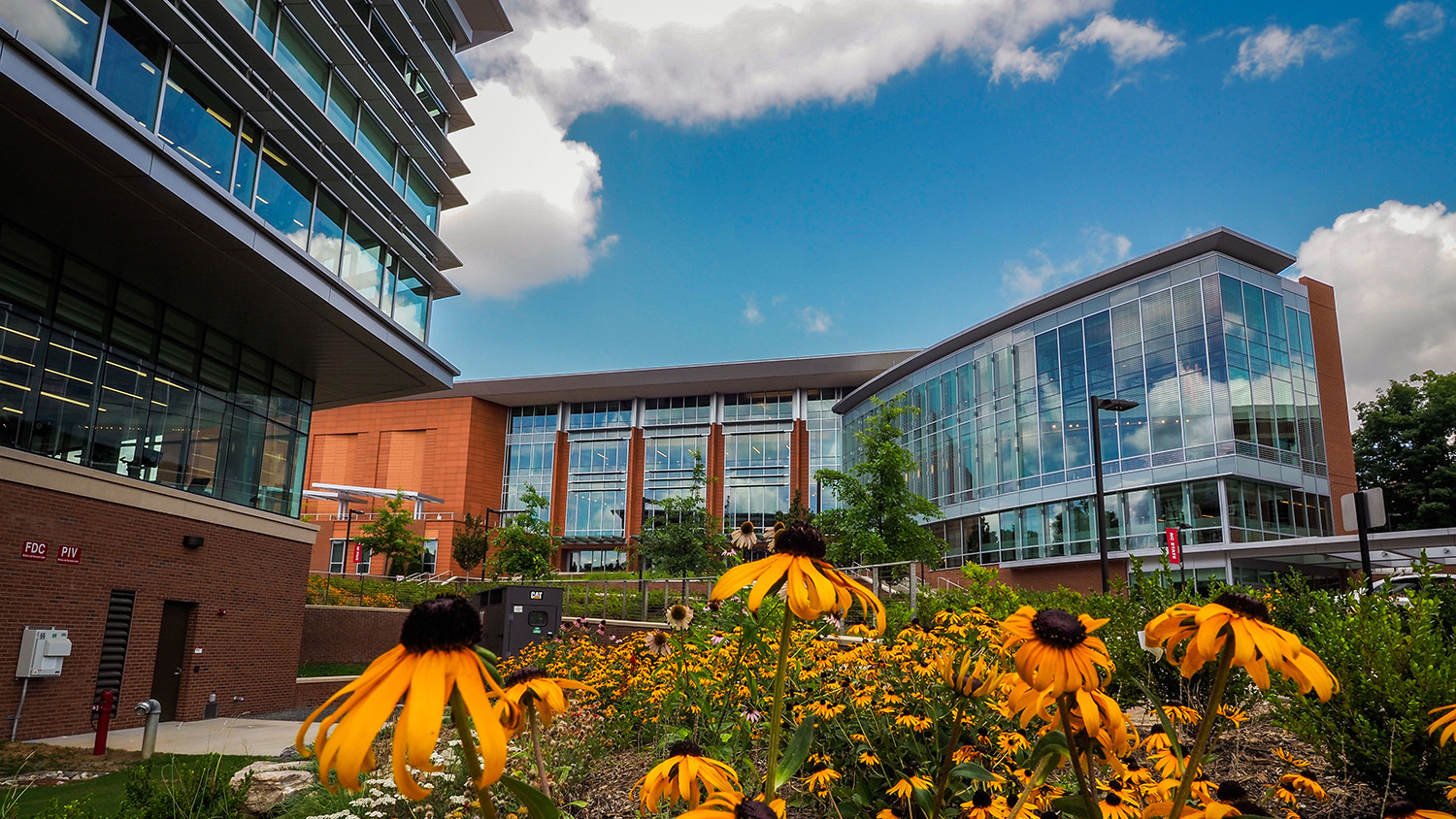DELTA Faculty Fellows Share Instructional Tips for Returning to In-Person Teaching

Within the past year, NC State faculty and staff embraced the challenge of advocating for student success through teaching at a distance. As the university begins to reopen buildings and classrooms, the transition to in-person and hybrid instruction will be a learning experience for students, faculty and staff.
Interim Vice Provost for DELTA Donna Petherbridge says, “I’m hoping faculty who were teaching in-person and are now moving back to that mode primarily take away the tools and techniques that helped their students in an online environment and continue to use those tools and techniques in the in-person classroom.” Lecture capture, online discussion forums, quizzes and flexible Zoom office hours are just some of the online learning practices Petherbridge anticipates instructors will continue to use as they shift to in-person instruction.
We spoke with some of our past and present DELTA Faculty Fellows Lina Battestilli, Julianne Treme, Annette Moore, Maria Gallardo-Williams and Elaine Bohórquez to hear what they have learned throughout their experiences with distance education and what they hope to implement in in-person instruction in the fall.
What were some of the most impactful learning moments you’ve experienced while teaching during the pandemic?
Lina Battestilli: Both students and instructors need flexibility and compassion. There is not one single way that works for all. Some students and some instructors liked online learning and others struggled with it. My goal going forward is to design my courses with flexibility in mind to provide my students various ways to learn in line with the Universal Design for Learning (UDL) theory.

Julianne Treme: Technology does not always work, so have a backup plan (or two). While students did not prefer to use their cameras, they were lively in the chat if myself or my TA checked it and replied regularly. I found that chat participants were much more varied than my usual group of volunteers and offered deeper questions/contributions. I’m curious if there is a way to replicate this in person as well.
Annette Moore: Building community among us is really important. Previously, I knew intellectually that my students and I are humans, with a life beyond my classes. The pandemic drove that home to me profoundly. “Students don’t care how much you know until they know how much you care” was an important teaching lesson for me during the pandemic.
Maria Gallardo-Williams: My biggest moment was when I was able to take my in-person lab courses to online courses, and how well the students responded to that change.
Elaine Bohórquez: Shifting a face-to-face course to an online format involves a lot more than simply running class sessions through Zoom. Course structures and methods used for face-to-face instruction do not always translate well to the autonomous learning environment of a fully online course. So, for an online course to be effective and efficient, it needs to be intentionally designed as an online course. For that reason, I spent the summer of 2020 completely overhauling my in-person courses to fit the newly required online format for the ’20-’21 academic year.
Were there any teaching strategies you learned and practiced during the pandemic that you plan to integrate into in-person teaching?
Lina Battestilli: During the pandemic, I focused on creating a virtual community in my class to provide opportunities for my students to collaboratively work together. There is a large body of research that shows peer instruction and collaboration benefits student learning. I will continue to use online discussion forums, one-page Google Slides that students use to introduce themselves (optional!), and coordinate and carefully manage small teamwork.
Julianne Treme: I plan to implement both PlayPosit videos and Google Jamboard for in-person teaching. I also want to implement chat, but I’m not sure how yet.
Annette Moore: Having undergraduate students help me teach my courses was critical for our success. These course assistants, who had previously taken my class, provided invaluable perspectives, insights and suggestions on how to more effectively engage students in course concepts and learning activities.
Maria Gallardo-Williams: Increased communication was really helpful. Make sure that things are communicated in more than one format so that the maximum number of students can see them. Use discussion boards extensively and extra office hours as needed.

Elaine Bohórquez: Part of the redesign process for me involved some research into the realm of cognitive psychology, particularly as it relates to the learning challenges posed by an online format (e.g. attention spans, cognitive load, multimedia learning, etc.). Understanding how students learn made me more intentional about how material was presented. Some of these can translate well to an in-person format. I plan to continue to use short lecture videos, scaffolded assignments, and guided peer reviews and reflections to encourage student progression toward higher-order critical thinking.
How has DELTA served you in instructing students digitally during the pandemic?

Lina Battestilli: I walked away from DELTA Summer Shorts in August 2020 with lots of practical ideas I was able to incorporate into my fall courses. For example, I incorporated a Welcome Check-in Survey in a class of more than 300 students, and the students really appreciated that extra step to show caring. The results of this survey gave me and the TAs a perspective of what we needed to know about the students’ wellbeing before the start of the semester. I plan to continue this practice during in-person teaching.
Julianne Treme: DELTA has frequent workshops that offer a range of times (short vs. long) on anything I could possibly be interested in. Their instructional design team is wonderful and talented. I also appreciate the newsletters with updates and articles.
Annette Moore: I participated in many DELTA workshops during the pandemic — ways to make synchronous class times more engaging, tips and tools for more effective online teaching — and just having the support of DELTA staff and colleagues to discuss options (to test or not to test, for example).

Maria Gallardo-Williams: I worked with DELTA to create my virtual reality lab simulations, as well as my lab videos. Without DELTA, I would have had a very difficult time teaching my courses during the pandemic.
Elaine Bohórquez: DELTA has been invaluable during the pandemic. Their digital teaching resources and tutorials helped to streamline the process of converting face-to-face materials to online materials. The personal support from DELTA staff also made the transition much easier because they directed me to resources that fit my specific needs.
Do you have any advice for faculty as they make the transition back to class in the fall?
Julianne Treme: Expect a few hurdles in the beginning as students become acclimated to in-person classes. Some have never stepped foot on NC State’s campus, so patience will be a virtue as they learn how to navigate in-person courses and deadlines. I plan to do several check-ins with students earlier in the semester to make sure I catch students that may be overwhelmed or need guidance on how to succeed in the course.

Annette Moore: I schedule a make-up day toward the end of the semester to allow students to make up weekly quizzes or homework assignments they may have missed for any reason. I include this in my syllabus and announce it in class, so students know this from day one. This one-day make-up policy also eliminates a flood of emails throughout the semester from students asking for special consideration. I have found that only a small percentage of students take advantage of this opportunity, but most seem to appreciate it is an option available to them if needed. Remember that you and your students are still as human as you were during the pandemic. Give yourself and your students permission and encouragement to engage in life-giving activities throughout the semester.
Maria Gallardo-Williams: Keep the lines of communication open, and the deadlines flexible.
Elaine Bohórquez: There are many different ways to deliver content and engage students, and the same methods will not work for every course. Don’t be afraid to change things up! Explore new technologies and teaching methods, and talk with fellow faculty about their experiences; you may find something new that enhances the course for your students and improves your own experience as the instructor too.
The fellows as well as other faculty members at NC State will approach this upcoming school year with experiences of overcoming teaching virtually and at a distance. “I look forward to the “new normal”, and hope that we won’t forget the lessons we learned during this very difficult year,” says Gallardo-Williams.
DELTA will continue to provide support to faculty and staff by investigating how to improve learning outcomes as we make the transition back into the classroom.


